"The six dynasties of the late Han, Wei and Jin dynasties were the most chaotic and socially painful era in Chinese history, yet one of the most spiritually free and liberated, the richest in wisdom and passion, and therefore the richest in artistic spirit."
Due to the decline of Confucianism and the rise of Xuanxue, both men and women in the Wei and Jin dynasties sought to express their superior inner personality with a beautiful external appearance.
In addition, Buddhism was spread to the east, the exchange of migration between north and south brought about a broadening of horizons.
As well as the harem beauties, the number of dancers is vast, must be unique makeup to attract attention, so all the reasons contributed to the Wei Jin and North and South Dynasties on the explosive development of makeup.
This development is due to the thin burial of the number of makeup artifacts, mostly presented in the level of written records so that we will call this period the peak era of makeup at the documentary level.
This article brings together 10 classic Hanfu makeup looks from the Wei and Jin dynasties. Through them, you can get a glimpse of how the Chinese traditional hanfu makeup evolved and continued to progress.

White makeup (白妆), with white powder facial, no rouge on both cheeks, mostly seen in the palace maiden decorated. This makeup style is more than the pursuit of simple and elegant beauty, quite similar to the pre-Qin plain makeup.
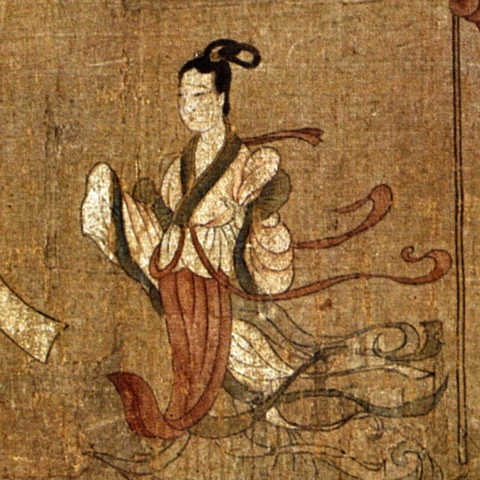
Eastern Jin Dynasty - Gu Kaizhi - The Picture of the Ode of the River Goddess
Yun Hong makeup (晕红妆, halo red), with rouge, red powder on the cheeks of a more colorful red makeup.
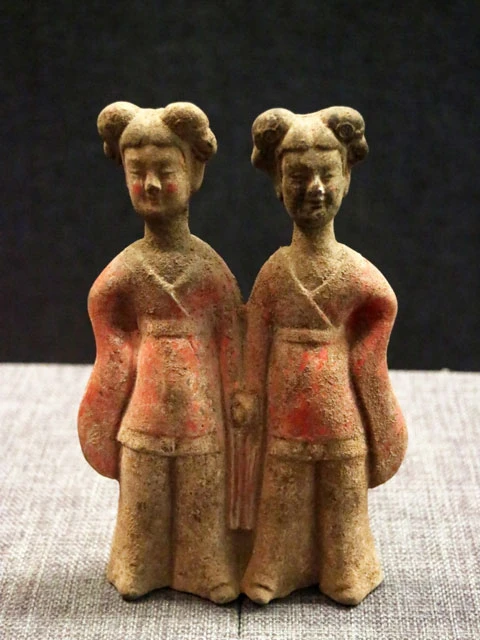
Northern Wei terracotta figurines - Luoyang Museum Collection
Purple makeup (紫妆), with purple powder on the face. At first, it was made of rice powder, Hu powder mixed with the abutilon indicum, and was light purple.
It is said to be made by Duan Qiao Xiao, a court lady of Wei. According to the experience of modern makeup, yellow face, more purple powder base could cover its yellow.
Xu Fei half face makeup (徐妃半面妆), as the name implies, that is, only makeup half of the face, the color of the left and right cheeks are not the same. According to legend, from Liang Yuandi's consort Xu.
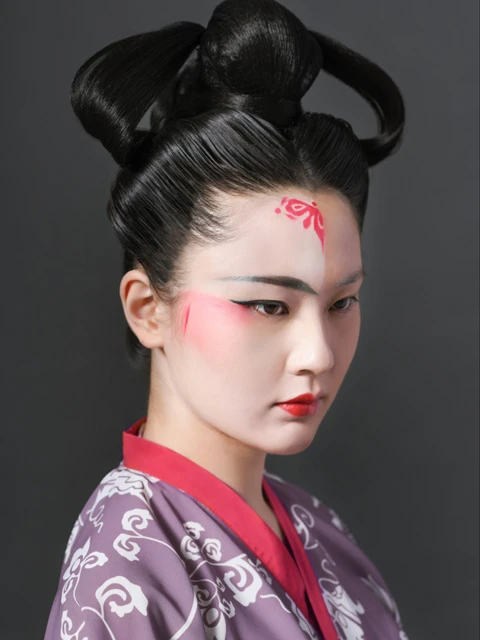
Xu Fei half face makeup
Xiane makeup (仙蛾妆) is a kind of eyebrow makeup connected to the eyebrow heart. The eyebrow makeup of the Wei, Jin, and North and South Dynasties, the Han Dynasty Xiane eyebrows, long eyebrows, and broad eyebrows are still the most popular.
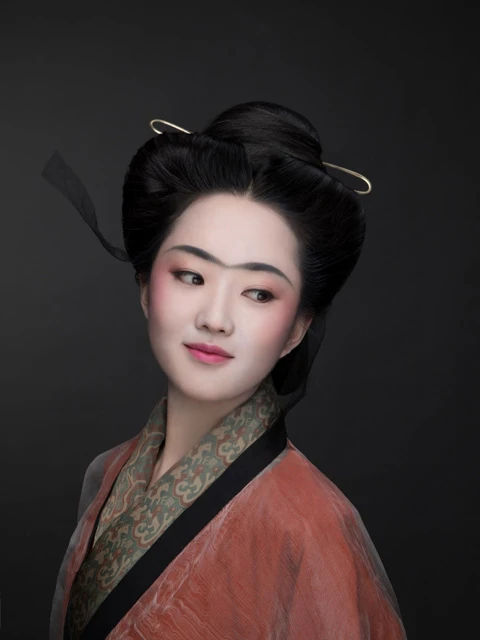
Xiane makeup
Bazi Eyebrows (八字眉). Li Shangyin's poem "Die San Shou" describes Princess Shouyang (寿阳公主), daughter of Emperor Wu of the Southern Dynasty Song Dynasty, once wrote: "Princess Shouyang's makeup when she got married, eight-character palace eyebrows held the forehead yellow." The princess was still makeup with eight eyebrows when she married, which shows its popularity.
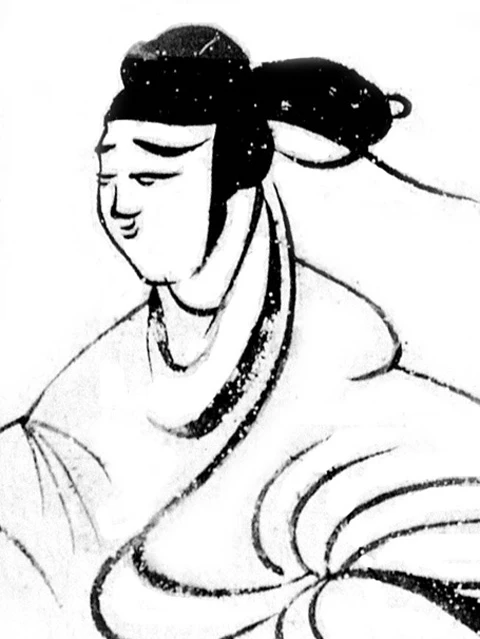
Painted Portrait Bricks from the 16th Kingdom Tomb of the Wei and Jin Dynasties - Woman with Bazi eyebrows - Jiayuguan City
Forehead Yellow (额黄), with yellow pigment painted on the forehead, so the name. Its popularity, and the Wei Jin and North and South Dynasties when Buddhism in China has a direct relationship with the wide spread.
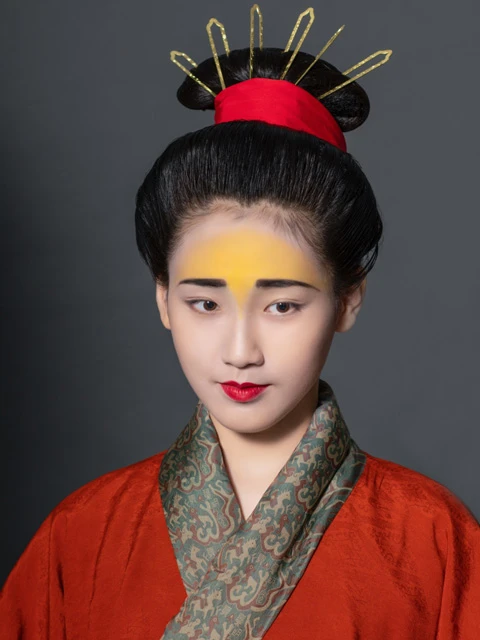
Forehead Yellow makeup
At that time, the country was prevalent in the construction of temples, women may be inspired by the gold-painted Buddha statue, also dyed their foreheads into yellow, which will form the custom of painting yellow foreheads for a long time.
Turmeric is a very suitable material. The effect after dyeing is a bright yellow color with strong adhesion and is very transparent.
In addition to painting, Forehead Yellow is also made of yellow paper, or gold foil cut into patterns and pasted on the forehead when used, which is also called "Hua Huang (花黄)".
The heroine of the Northern Dynasty, Hua Mulan, dressed as a man, after returning from the army on behalf of her father's honor, also did not forget to "Combed and coiffed cloudy hair by the window, adorned forehead with a yellow pattern before the mirror."
Xie Hong (斜红, oblique red) is a kind of makeup on both sides of the cheeks and between the eyebrows, primarily shaped like a crescent moon, with a bright red color. The image is odd, the intention is strange, some are also deliberately depicted as broken, as if two knife scars, there are also curled patterns.
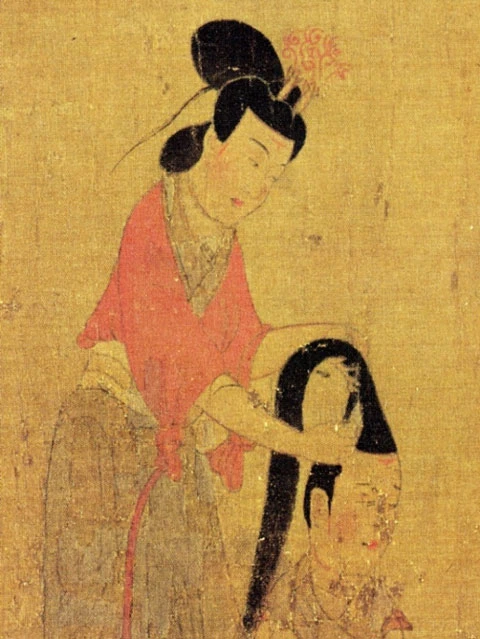
Eastern Jin Dynasty - Gu Kaizhi - Admonitions Scroll
This makeup began in the Three Kingdoms. Originated from such a story: Cao Pi, Emperor of Wei, had a palace maid called Xue Yilai, Emperor Wen was very fond of her. One night, the Emperor was reading by candlelight, and the desk was surrounded by a screen made of crystal. When Xue Yailai approached the Emperor, she hit the screen head-on, bleeding, and left two scars after healing.
But the Emperor still loves it as before, and other court ladies are very envious; they also have to follow suit, with rouge on the cheeks painted with this blood marks. Over time, it has evolved into this unique face makeup - oblique red. It can be seen that the slant red at the beginning of its origin is out of a defective beauty.
Plum blossom makeup (梅花妆), a kind of Huadian (花钿, flower inlay).
During the Sixth Dynasty (generally refers to the six southern dynasties in Chinese history from the Three Kingdoms to the Sui Dynasty), a kind of plum blossom-shaped flower inlay was especially popular, called "plum blossom makeup".
According to legend, Princess Shouyang, lying on her back in the Huan Zhang temple ond day, the plum tree in front of the temple was blowing in the breeze, falling a plum blossom, impartially fell on the forehead of the princess, the forehead was dyed into the shape of flower petals, and a long time to wash off.
Other women in the palace then competing to follow suit, cut plum flowers on the forehead, gradually spread from the court to the people, became a fashion, while this makeup is also known as "Shouyang makeup".
Sui makeup (碎妆), refers to a Mian Ye painting (paste) full-face makeup.
The Mian Ye of the Sixth Dynasty has been dramatically developed compared to the Han Dynasty makeup, the shape is not limited to dots, but a variety of patterns and textures are available.
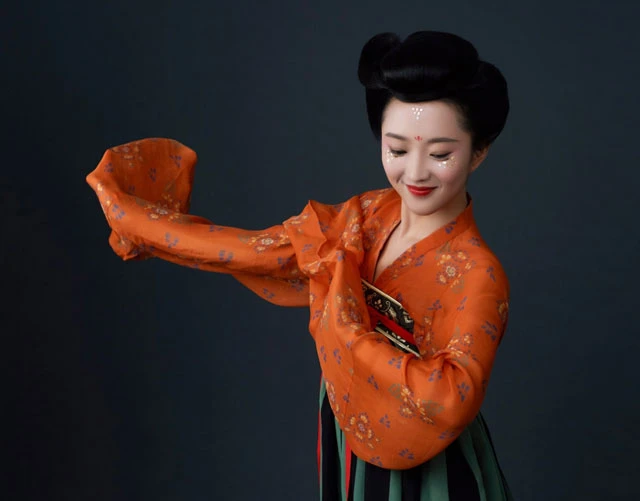
Sui makeup
And at this time, Mian Ye was no longer limited to the dimples but developed to stick all over the cheeks, giving a sense of fragmentation.
Reference content selected from “The Beauty of Chinese Makeup (中国妆容之美)”
More about the traditional hanfu makeup of different dynasties in ancient China:
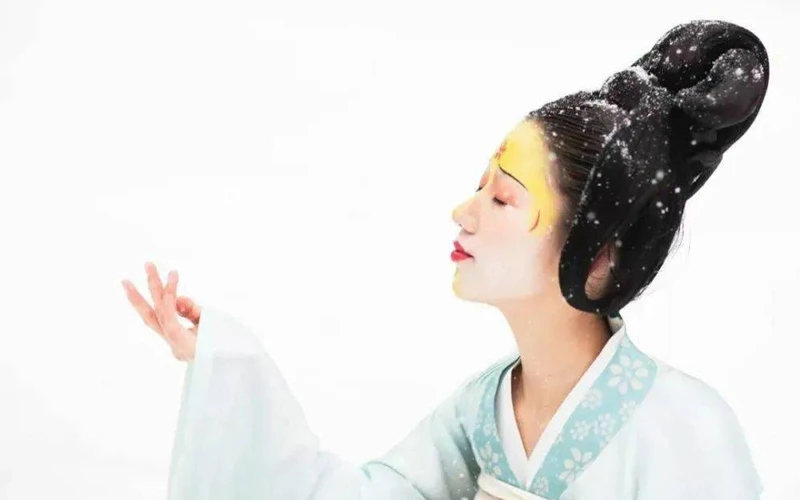
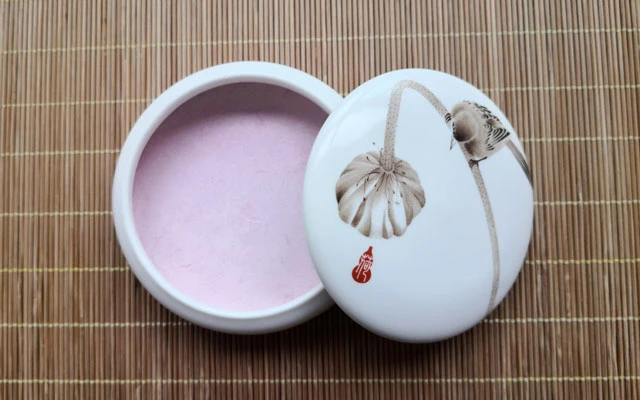
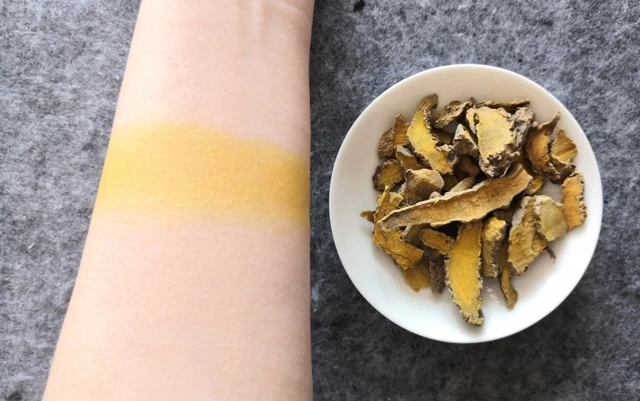
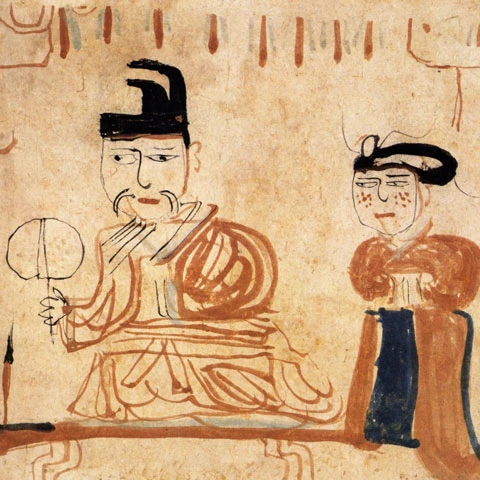
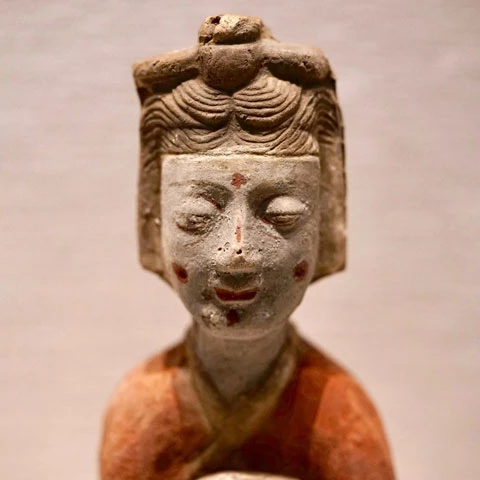
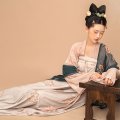

😍😍😍